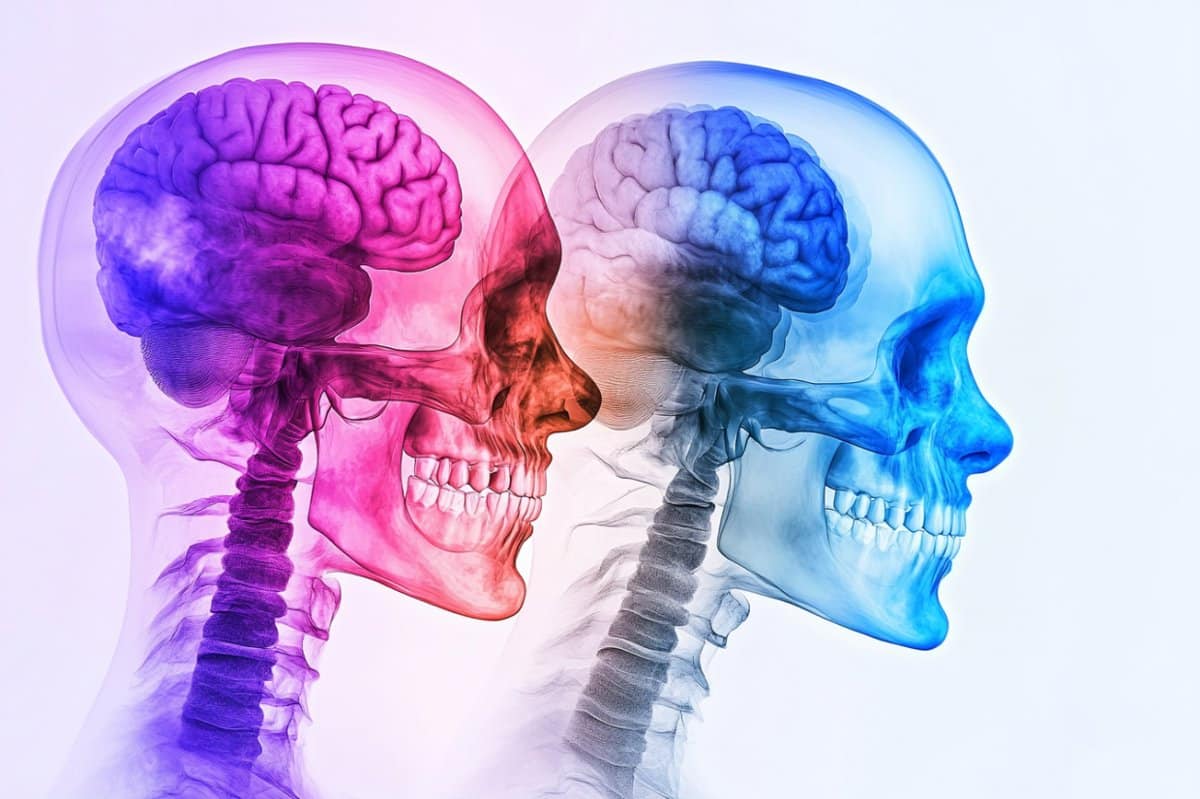Summary: Poor oral health is significantly linked to increased migraine, abdominal, and musculoskeletal pain in women, particularly those with fibromyalgia. Researchers identified specific oral microbes associated with higher pain scores, highlighting a potential gut-brain-oral microbiome connection.
Participants with the worst oral health were up to 60% more likely to report severe body pain and nearly 50% more likely to suffer from migraines. These findings underscore the importance of oral hygiene not just for dental care but for broader pain management and overall health.
Key Facts:
- Pain Correlation: Women with poorer oral health were 60% more likely to have severe body pain and 49% more likely to experience migraines.
- Microbial Link: Specific oral bacteria (e.g., Dialister, Fusobacterium) were associated with chronic pain conditions.
- Fibromyalgia Focus: 67% of participants had fibromyalgia, a condition often underdiagnosed and marked by widespread pain.
Source: University of Sydney
New research from the University of Sydney has revealed poor oral health is significantly associated with higher instances of migraines, abdominal and body pain in women.
Published in Frontiers in Pain Research, the world-first study identified specific oral microbes correlated with certain pain conditions, suggesting a potential relationship between the oral microbiome and the nervous system.

The findings highlight the importance of good oral health to potentially mitigate pain and improve overall wellbeing, prompting further exploration into the role of oral microbiota in chronic unexplained pain conditions.
This includes fibromyalgia, a condition experienced by 67 percent of the study participants.
“This is the first study to investigate oral health, oral microbiota and pain commonly experienced in women with fibromyalgia, with our study showing a clear and significant association between poor oral health and pain,” said lead investigator Associate Professor Joanna Harnett from the Faculty of Medicine and Health.
“Our findings are particularly important to fibromyalgia which, despite being a common rheumatological condition, is often underrecognised,” said first author and PhD candidate in the Faculty of Medicine and HealthSharon Erdrich.
“Fibromyalgia is a chronic condition characterised by widespread musculoskeletal pain, and headaches including headaches, as well as fatigue, sleep disturbances, and cognitive problems.”
How the research worked
The research examined associations between self-reported oral health, the oral microbiome, and various pain presentations in a group of New Zealand women with and without fibromyalgia.
Oral health was assessed using the WHO oral health questionnaire and evaluated against body pain, headaches, migraines, and abdominal pain using validated instruments, including the Short-form 36 (which measures quality of life), the International Headache Society headache survey and the functional bowel disorder severity index.
Strong associations were evident between oral health scores and pain and each of these were associated with specific microbes found in the mouth, which were assessed using advanced genomic technology.
Participants with the poorest oral health were more likely to suffer from higher pain scores: 60 percent were more likely to experience moderate to severe body pain, and 49 percent were more likely to experience migraine headaches. Lower oral health was a statistically significant predictor of frequent and chronic migraine.
Four oral microbial species from the Dialister, Fusobacterium, Parvimonas and Solobacterium genera were significantly associated with pain after age, BMI and added dietary sugars were considered.
A weak but significant inverse correlation with diet quality and oral health was also found, though the researchers note this has yet to be investigated in detail.
The Australian Dental Association recommends regular oral hygiene appointments and dental health checks, in addition to twice daily teeth brushing and flossing.
Declaration
Ethical review and approval of the study protocol and procedures was granted by the New Zealand Health and Disability Committee.
Funding: The study was registered with the Australia and New Zealand Clinical Trials Registry (ANZCTR). Written consent was obtained from all participants prior to undertaking the requirements of the study.
About this oral health and pain research news
Author: Luisa Low
Source: University of Sydney
Contact: Luisa Low – University of Sydney
Image: The image is credited to Neuroscience News
Original Research: Open access.
“An association between poor oral health, oral microbiota and pain identified in New Zealand women with central sensitisation disorders” by Joanna Harnett et al. Frontiers in Pain Research
Abstract
An association between poor oral health, oral microbiota and pain identified in New Zealand women with central sensitisation disorders
Introduction: The portal to the gastrointestinal tract is the oral cavity, with transient and permanent microbial residents. Oral pathogens are implicated in the aetiology of several chronic conditions.
To date, the role of oral health and the oral microbiota in the aetiology of pain in sensitisation disorders have not been explored. Here, we examined associations between self-reported oral health, the oral microbiome, and various pain presentations in women.
Methods: Oral health in women was assessed using the WHO oral health questionnaire. Body pain, migraine, and abdominal pain were determined using validated instruments. Saliva samples were evaluated using metatranscriptomics for relative gene abundance.
Demographic and clinical characteristics data were evaluated for relationships between oral health scores, pain measures, and the oral microbiota at three taxa levels.
Results: Participants in the lowest quintiles for oral health were more likely to suffer migraine headaches (χ2 = 23.24, df 4, p < 0.001) and higher body pain scores. Four oral pathogenic species were significantly associated with SF36 bodily pain (q < 0.05) after controlling for confounders.
Relative abundance of Gardnerella (genus) correlated moderately with oral health scores (ρ = −0.346, q = 0.001), while Lancefieldella (genus) and Mycoplasma salivarius were associated with migraine.
Discussion: Low oral health scores correlated with higher pain scores. Both were associated with higher relative abundance of oral pathobionts. This suggests a potential role for the oral microbiota in the aetiology of pain experienced by women with migraine headache and abdominal and body pain.
These findings prompt consideration of an oral microbiome–nervous system axis.
Trial registration: The study was registered with the Australia and New Zealand Clinical Trials Registry (ANZCTR), registration number ACTRN12620001337965, on 11/12/2020 https://www.anzctr.org.au/, and with the World Health Organisation, UTN: U1111–1258-5108.







